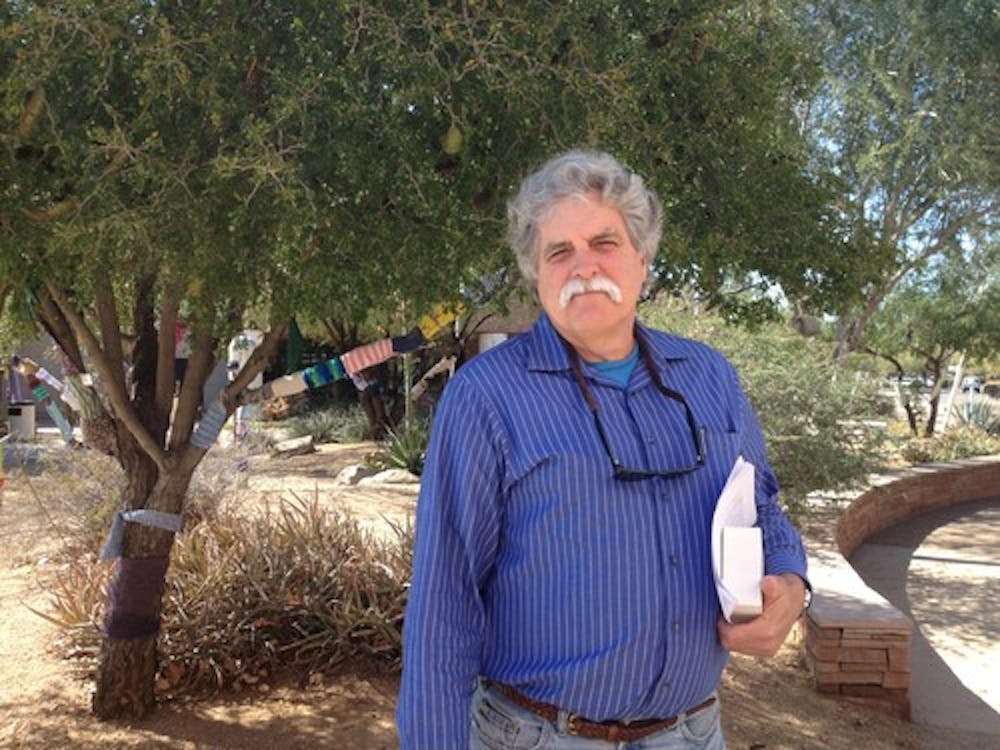Last week, Tom and I attended a free lecture at the Tempe History Museum. The topic for this month was the research of Stephen Germick about the Apache Leap legend. The legend goes like this:
Around 1877, General Crook and his regiment of the U.S. cavalry led a raid against the Apache tribe living in the area of Superior, Ariz. The Apache warriors fought back. However, they were driven to the edge of a cliff-face, where Crook’s men forced them to jump over the edge to their deaths. This was called the Apache Leap.
 The Apache Leap Mountain. Photo courtesy The World's Smallest Museum
The Apache Leap Mountain. Photo courtesy The World's Smallest MuseumBut as Germick pointed out in his lecture, there are a few things wrong with the legend.
He showed us pictures of bullet casings found at the site and matched them to guns the military used. What was interesting is that the dates when the casings and weapons were known to be used don’t match up with the date of the Leap. There are also no eyewitness accounts of the event. Every document or diaries that mention the Leap are written like “overheard conversations.” The authors took it from another source or were told about the event by someone else. Germick mentioned a few diaries in his lecture and pointed out that although they seemed to be eyewitness accounts, they all told the story very differently. One had the Apache forced off the cliff by the military. Another said the Apache committed suicide. There are many inconsistencies in the story which lend to the increasingly mythical portrait of the Leap.
 Stephen Germick after his lecture at the Tempe History Museum. Photo by Holly Solis
Stephen Germick after his lecture at the Tempe History Museum. Photo by Holly SolisGermick concluded that what some may have seen as Apaches leaping or falling to their deaths, was actually most likely an escape route that others could not see. The cliff face that the Apache were supposedly forced off of was not a sheer drop. It was a scary slope, but a slope nonetheless, and since the Apache lived in the area and knew the terrain well, they most likely were able to jump down from rock to rock to escape the military’s hail of gunfire. Germick supported this claim with the fact that bullet casings were found at the very edge of the cliff, meaning the military men were shooting downwards.
He asked a very good question. “If they were forcing the Natives to their deaths, or the Natives were committing suicide, why would you shoot at them?” Suddenly, the Apache Leap story is thrust into the realm of legend and logic starts to take hold.
Stories like this are extremely common in historical study. Sometimes it’s an oral myth handed down for centuries and sometimes it’s a legend created from misinformation or a skewed perspective. It’s a very tough job for historians to wade through the fact and the fiction, but I think that makes it even more interesting.
The lecture was part of the monthly Tempe Historical Society Lunch Program held Wednesdays at 11 a.m. Located at the Tempe History Museum (located on the corner of Rural and Southern), they offer free lectures given by local historians about Arizona history. We highly recommend them!
Want to get more information about these lectures? Having a burning historical question? Drop us a line at sparkysquill@gmail.com or find us on Twitter at @sparkysquill.




